Israelites and the Assyrians –
On the Margins of Empire
Beginning in the Early Bronze Age (circa 3500 BC) pastoral nomads – indigenous to the region – periodically settled the Canaanite highlands. Settlement was a response to grain shortage induced by disruption of lowland agriculture. But then drought forced these marginal farmers back into nomadism again. A second phase of settlement occurred during the Middle Bronze Age (from around 2000 BC) and a third, and final, period of highland settlement occurred after 1200 BC.
The catalyst for this final phase of migration to subsistence farming was the collapse of the cities of Canaan, overwhelmed by an invasion by the Sea Peoples. One consequence was that fringe subsistence farmers in the hills became the original ‘Israelites’ – most settling in the central highlands of Samaria, rather fewer further south in Judaea. But to the north and east of the sparse, tribal enclaves of the ‘Israelites’, expansive city-based empires were emerging that would overshadow their entire world. Foremost among them was Assyria, a terror and an inspiration to the Jews.
Rise of Assyria

Shalmaneser and Nimrud (Kalah)
Four warrior kings in particular built the Assyrian Empire:
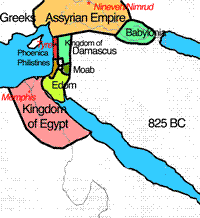
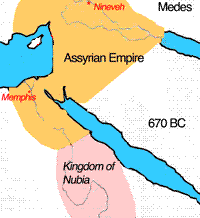
An Israelite Empire? Don't Blink!
Meanwhile, in the Mountains ...
Sargon's Khorsabad (Dur Sharrukin)
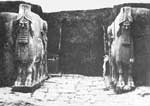
Evidence of Khorsabad
Massive human-headed, winged bulls represented the might of Assyria
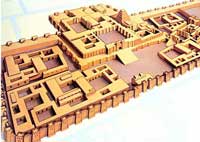
Reconstruction of Khorsabad
The city Khorsabad flourished after Sargon's death in 705 BC, though his son Sennacherib (705 - 681 BC) moved the capital to Nineveh.
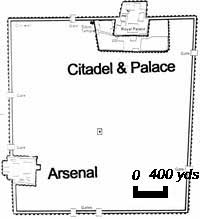
Archaeology has revealed the plan of Sargon II's capital Khorsabad:
It covered about 300 hectares (741 acres).
In comparison, 'Solomon's' Jerusalem was 1/20th size of Assyrian Khorsabad – and even that's just a theory!
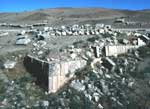
Extant ruins of Khorsabad
Letters to and from the royal architect Tab-shar-Ashur, written on clay tablets, reveal that cedar from Lebanon was used extensively.
Sennacherib's Nineveh
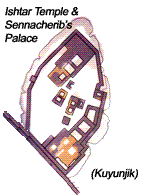
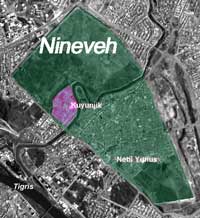
The reality of Sennacherib''s Palace:
The fantasy of Solomon's Palace:
The fantasy of vast tribute – and 666!
Egypt's Last Bid for Empire: Pharaoh Nekau II
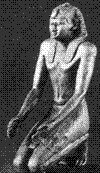
At last! – a genuine biblical pharaoh: 'Necho'
Babylon

Kings under priestly direction – biblical ideal
Sources:
- Paul Johnson, A History of the Jews (Phoenix Grant, 1987)
- Dan Cohn-Sherbok, The Crucified Jew (Harper Collins,1992)
- Henry Hart Milman, The History of the Jews (Everyman, 1939)
- Josephus, The Jewish War (Penguin, 1959)
- Leslie Houlden (Ed.), Judaism & Christianity (Routledge, 1988)
- John Romer, Testament (Viking, 1999)
- Thomas L. Thompson, The Bible in History (Pimlico, 2000)
- Israel Finkelstein, Neil Silberman, The Bible Unearthed (Simon & Schuster, 2001)
- Ahmed Osman, Moses Pharaoh of Egypt (Grafton, 1990)
- B.S.J. Isserlin, The Israelites (Thames & Hudson, 1998)
Related Articles:
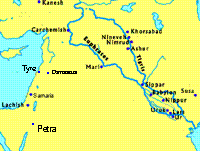
1000 - 600 BC
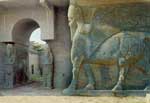
Nimrud - fortress and capital of the Assyrian empire from about 879 to 706 BC.
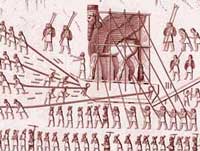
Assyria - under construction

Shalmaneser III (858-824), a genuine Semitic imperialist. He defeated an alliance of the Syrian kingdoms of Damascus and Hamah – and Ahab's Israel at Qarqur in 854 BC.
No Evidence


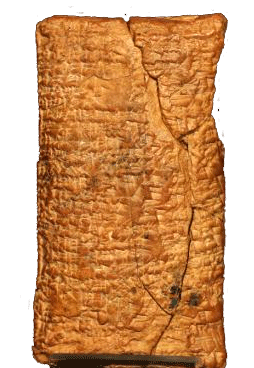
Why waste a good yarn?
